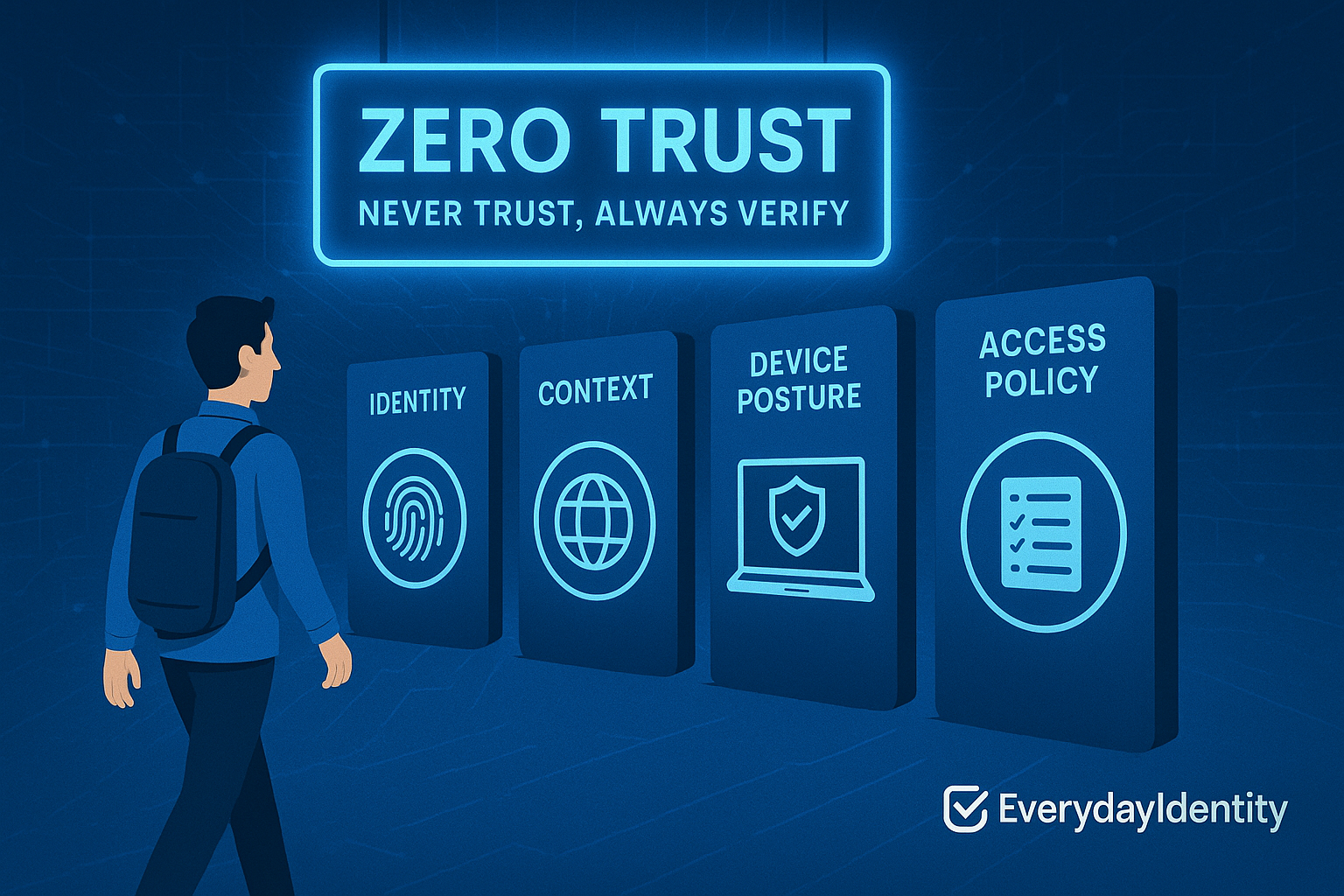
IAM 101: Zero Trust and Identity – Continuous Verification in Practice
EverydayIdentity
TL;DR
Zero Trust isn’t a product—it’s a security philosophy. At its core is continuous verification: a principle that access decisions should never rely on a one-time check. This post breaks down how identity, context, device posture, and dynamic access policies form the foundation of Zero Trust, and how IAM teams can implement this model in practice.
What Is Zero Trust?
“Never trust, always verify.”
Zero Trust is a cybersecurity model that assumes every access request—whether internal or external—is a potential threat. Unlike traditional perimeter-based models, Zero Trust:
- Does not assume trust based on network location (e.g., VPN or LAN)
- Treats every user, device, and session as untrusted until verified
- Continually assesses risk before granting or maintaining access
The Four Pillars of Identity in Zero Trust
To apply Zero Trust to IAM effectively, security decisions must account for multiple signals:
| Pillar | Description |
|---|---|
| Identity | Who is making the request? Includes user credentials, authentication factors, group memberships, and roles. |
| Context | When and where is the request happening? Includes location, IP reputation, and behavioral analytics. |
| Device Posture | Is the device healthy? Evaluates antivirus status, OS version, disk encryption, and compliance posture. |
| Access Policy | What is the user trying to do—and are they allowed? Involves roles, ABAC/RBAC policies, session limits, and step-up authentication. |
How Continuous Verification Works in Practice
Instead of granting access once at login and assuming safety, Zero Trust enforces ongoing trust evaluation:
- Re-authentication triggers (e.g., time-based, sensitive actions, risk score changes)
- Conditional access policies using dynamic signals
- Just-in-time access with time-boxed elevation
- Device compliance checks before and during sessions
- Session monitoring and revocation on anomaly detection
Example: A finance user logs in from their usual laptop—but this time from a new location and using outdated antivirus software. Under Zero Trust, the request is flagged, and access is denied or additional verification is required.
IAM Tools that Support Zero Trust
Modern identity platforms have integrated Zero Trust capabilities:
- Okta + CrowdStrike → for device trust signals and secure authentication
- Azure AD Conditional Access → policies based on risk, device state, and identity protection signals
- Google BeyondCorp → contextual access to applications based on user and device trust
- Ping + Zscaler → enforce secure access to cloud apps with identity-aware proxies
Best Practices for IAM Teams
✅ Centralize identity management to ensure consistent access controls
✅ Deploy phishing-resistant MFA like passkeys or FIDO2
✅ Integrate device signals into policy decisions
✅ Regularly review access logs for anomalies and policy tuning
✅ Educate users on context-aware access changes (to avoid frustration)
✅ Audit access policies to prevent privilege creep
Zero Trust is a Journey, Not a Checkbox
Many organizations adopt Zero Trust incrementally—starting with MFA and SSO, then layering on conditional access and device trust. Each layer of verification makes lateral movement harder and reduces blast radius from account compromise.
🔒 Start with identity. Mature with context. Strengthen with devices. Govern with policy.
Final Thought
Zero Trust isn’t about paranoia—it’s about control. By requiring continuous verification using identity, context, and policy, you create a security fabric that scales with the speed of modern business.